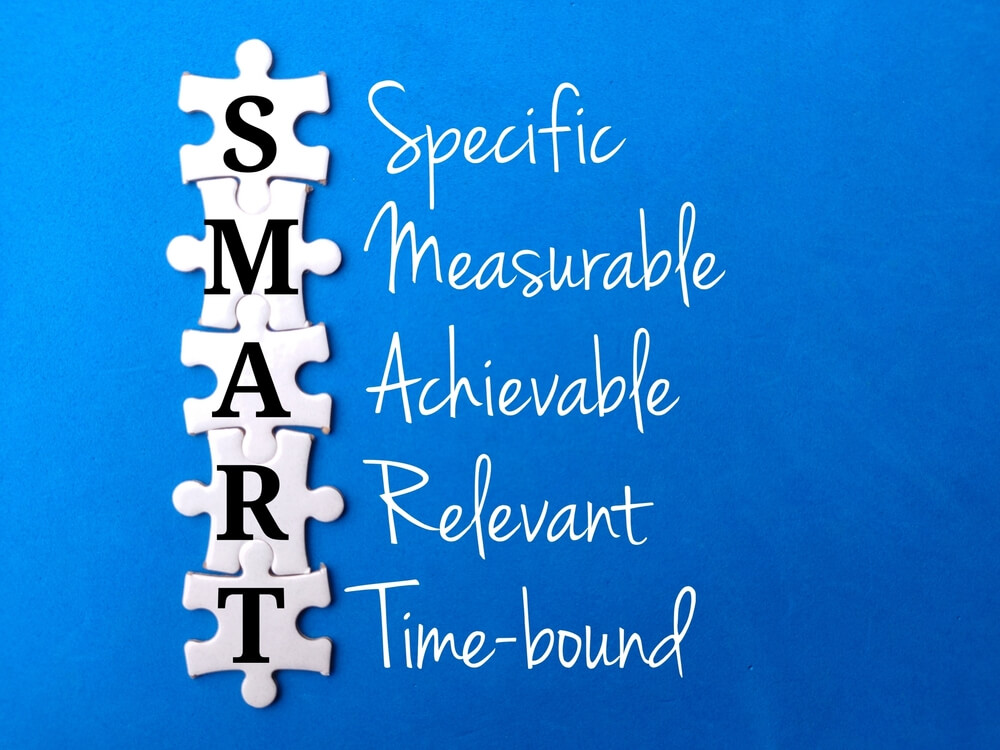
Quick Steps to Demand Generation Success for B2B Companies
Business-to-business (B2B) demand generation creates and nurtures interest and demand for a B2B company’s products or services. Demand generation involves various marketing tactics and strategies to attract and engage potential customers. These strategies drive them through the sales funnel.
Successful demand generation includes these steps:
 Setting specific, measurable, achievable, relevant, and time-bound (SMART) goals in demand generation provides clear and precise objectives. It helps teams to effectively focus their efforts. Having measurable goals allows easy tracking and evaluation of the success of various marketing initiatives.
With achievable goals, demand generation expectations become realistic and attainable, which prevents frustration and burnout. Relevance ensures that the goals align with the overall business strategy and that resources are efficiently allocated. Finally, time-bound goals create a sense of urgency, motivating teams to work towards their objectives within a defined time frame.
Setting up SMART goals for demand generation requires some best practices:
Setting specific, measurable, achievable, relevant, and time-bound (SMART) goals in demand generation provides clear and precise objectives. It helps teams to effectively focus their efforts. Having measurable goals allows easy tracking and evaluation of the success of various marketing initiatives.
With achievable goals, demand generation expectations become realistic and attainable, which prevents frustration and burnout. Relevance ensures that the goals align with the overall business strategy and that resources are efficiently allocated. Finally, time-bound goals create a sense of urgency, motivating teams to work towards their objectives within a defined time frame.
Setting up SMART goals for demand generation requires some best practices:
 B2B market research provides insights into the competitive landscape. It enables businesses to identify gaps and opportunities in the market. It helps with understanding customer needs, pain points, and preferences, allowing the development of refined content and marketing strategies that resonate with the target audience.
Market research identifies emerging trends and industry shifts, which inform product development and marketing campaigns. It helps optimize resource allocation, focusing on the most promising market segments. These can improve revenue and demand generation activities.
Here are some tips for conducting effective B2B market research:
B2B market research provides insights into the competitive landscape. It enables businesses to identify gaps and opportunities in the market. It helps with understanding customer needs, pain points, and preferences, allowing the development of refined content and marketing strategies that resonate with the target audience.
Market research identifies emerging trends and industry shifts, which inform product development and marketing campaigns. It helps optimize resource allocation, focusing on the most promising market segments. These can improve revenue and demand generation activities.
Here are some tips for conducting effective B2B market research:
 One of the most effective demand-generation strategies is to design a content strategy. It ensures the delivery of valuable and relevant information to the target audience. It establishes the brand as an authoritative source in the industry, building trust with potential customers.
B2B companies need a content strategy that aligns content with the buyer’s journey, addressing their needs and pain points at every stage. It also supports search engine optimization (SEO) efforts, improving online visibility and driving organic traffic to the B2B website. Remember these best practices to create a strong content strategy:
One of the most effective demand-generation strategies is to design a content strategy. It ensures the delivery of valuable and relevant information to the target audience. It establishes the brand as an authoritative source in the industry, building trust with potential customers.
B2B companies need a content strategy that aligns content with the buyer’s journey, addressing their needs and pain points at every stage. It also supports search engine optimization (SEO) efforts, improving online visibility and driving organic traffic to the B2B website. Remember these best practices to create a strong content strategy:
- Setting up SMART goals.
- Creating buyer personas.
- Conducting B2B market research.
- Selecting channels and platforms.
- Creating a content strategy.
- Devising a promotional strategy.
1. Setting up SMART Goals
 Setting specific, measurable, achievable, relevant, and time-bound (SMART) goals in demand generation provides clear and precise objectives. It helps teams to effectively focus their efforts. Having measurable goals allows easy tracking and evaluation of the success of various marketing initiatives.
With achievable goals, demand generation expectations become realistic and attainable, which prevents frustration and burnout. Relevance ensures that the goals align with the overall business strategy and that resources are efficiently allocated. Finally, time-bound goals create a sense of urgency, motivating teams to work towards their objectives within a defined time frame.
Setting up SMART goals for demand generation requires some best practices:
Setting specific, measurable, achievable, relevant, and time-bound (SMART) goals in demand generation provides clear and precise objectives. It helps teams to effectively focus their efforts. Having measurable goals allows easy tracking and evaluation of the success of various marketing initiatives.
With achievable goals, demand generation expectations become realistic and attainable, which prevents frustration and burnout. Relevance ensures that the goals align with the overall business strategy and that resources are efficiently allocated. Finally, time-bound goals create a sense of urgency, motivating teams to work towards their objectives within a defined time frame.
Setting up SMART goals for demand generation requires some best practices:
- Specific: Define the objective of the demand generation campaign. Examples: increasing lead generation, improving conversion rates, or expanding email subscriber lists.
- Measurable: Create key performance indicators (KPIs) to quantify progress. If the goal is to increase website traffic, specify that you want a 20% increase in monthly unique visitors.
- Attainable/Achievable: Ensure realistic and feasible goals within the resources and time frame. Note current capabilities and limitations to set achievable targets.
- Relevant: Align goals with the overall business objectives and demand generation strategy. Make sure that these directly contribute to the company’s growth and long-term success.
- Time-Bound: Develop a clear deadline for achieving your goals. This creates urgency and accountability, making tracking progress and necessary adjustments easier.
2. Creating Buyer Personas
Buyer personas provide a detailed understanding of the ideal customer, including their needs, pain points, behaviors, and preferences. Having clear buyer personas helps tailor marketing efforts to resonate with specific audience segments, increasing the relevance and effectiveness of campaigns. Personas help craft personalized content and messaging directly for the target audience. This creates a stronger connection and engagement. Creating successful buyer personas is essential for effectively tailoring a company’s marketing efforts. Here are some techniques to help build robust buyer personas:- Collect data from existing customers, analyzing their behavior, demographics, and preferences.
- Identify distinct customer segments within the target audience.
- Use actual quotes and customer stories to make the personas relatable to your team.
- Focus on their pain points to tailor messaging and solutions to their needs.
- Keep buyer personas updated to ensure that they remain accurate and relevant.
3. Conducting B2B Market Research
 B2B market research provides insights into the competitive landscape. It enables businesses to identify gaps and opportunities in the market. It helps with understanding customer needs, pain points, and preferences, allowing the development of refined content and marketing strategies that resonate with the target audience.
Market research identifies emerging trends and industry shifts, which inform product development and marketing campaigns. It helps optimize resource allocation, focusing on the most promising market segments. These can improve revenue and demand generation activities.
Here are some tips for conducting effective B2B market research:
B2B market research provides insights into the competitive landscape. It enables businesses to identify gaps and opportunities in the market. It helps with understanding customer needs, pain points, and preferences, allowing the development of refined content and marketing strategies that resonate with the target audience.
Market research identifies emerging trends and industry shifts, which inform product development and marketing campaigns. It helps optimize resource allocation, focusing on the most promising market segments. These can improve revenue and demand generation activities.
Here are some tips for conducting effective B2B market research:
- Define research objectives. Whether understanding market trends, identifying customer pain points, or evaluating competitors, well-defined goals guide research efforts.
- Gather data from various sources such as industry reports, online databases, customer surveys, competitor analysis, and interviews with industry experts.
- Study competitors’ strengths, weaknesses, market positioning, and strategies.
- Implement ongoing monitoring to stay updated on industry trends, customer preferences, and competitor activities.
4. Selecting Channels and Platforms
Proper marketing channels and platforms lead B2B companies to their clients, making channel selection critical for success in demand generation. It also optimizes resource allocation by avoiding wasted efforts on irrelevant channels. When selecting the proper channels, consider the nature of the products or services and where competitors are active. Doing so helps maintain a competitive presence. Additionally, channel selection helps fine tune your content and messaging to suit the platform’s format and audience behavior. Consider these strategies to make informed choices:- Understand the target audience’s preferences and behavior, where they spend their time online, which social media platforms they use, and the content that they consume.
- Define demand generation goals and objectives and align channel selection with the specific objectives.
- Research competitors to see what channels and platforms on which they are active.
- Consider channels best suited for specific types of content. For example, visual content performs well on platforms such as Instagram and Pinterest, while longer-form content does well on blogs or LinkedIn.
5. Creating a Content Strategy
 One of the most effective demand-generation strategies is to design a content strategy. It ensures the delivery of valuable and relevant information to the target audience. It establishes the brand as an authoritative source in the industry, building trust with potential customers.
B2B companies need a content strategy that aligns content with the buyer’s journey, addressing their needs and pain points at every stage. It also supports search engine optimization (SEO) efforts, improving online visibility and driving organic traffic to the B2B website. Remember these best practices to create a strong content strategy:
One of the most effective demand-generation strategies is to design a content strategy. It ensures the delivery of valuable and relevant information to the target audience. It establishes the brand as an authoritative source in the industry, building trust with potential customers.
B2B companies need a content strategy that aligns content with the buyer’s journey, addressing their needs and pain points at every stage. It also supports search engine optimization (SEO) efforts, improving online visibility and driving organic traffic to the B2B website. Remember these best practices to create a strong content strategy:
- Research and understand the B2B audience to customize content to address specific concerns and provide value.
- Align content with the stages of the B2B buying process (awareness, consideration, and decision). The content must educate and nurture leads at each stage.
- Offer a variety of content formats to cater to different learning preferences.
- Maintain a consistent publishing schedule to keep your audience engaged.
- Develop a plan to promote and distribute your content. Use owned, earned, and paid channels such as social media, email marketing, SEO, and content syndication.
6. Devising a Promotional Strategy
A promotional strategy for demand generation makes certain that businesses reach and engage their target audience. It helps allocate resources more effectively, provided they invest in the most cost-efficient and impactful promotional channels and tactics. A well-crafted strategy guarantees consistency and coherence to support brand identity and messaging. It optimizes timing and frequency, making sure that promotional activities line up with the buyer’s journey and market trends. Developing a promotional strategy for B2B demand generation is a complex process. These strategies can help:- Adopt a multi-channel approach to reach B2B buyers. Include email marketing, social media advertising, content marketing, webinars, trade shows, and paid search.
- Use data and insights to segment the audience and deliver personalized content and offers.
- Share valuable, informative content through various channels to establish the brand and capture the attention of potential buyers.
- Implement a lead nurturing strategy such as targeted emails, personalized content, and automation.
- Monitor performance by tracking demand generation metrics and key performance indicators (KPIs) such as click-through rates, conversion rates, and ROI.
- Conduct A/B tests on various elements of demand generation campaigns, such as email subject lines, ad creatives, landing page designs, and calls to action (CTAs). Analyze results to understand what resonates best with the audience.
Summing Up
Successful B2B demand generation includes setting SMART goals, creating buyer personas, conducting B2B market research, and selecting the proper channels and platforms. Solid content and promotional strategies also ensure that demand generation campaigns reach their intended audience. Learn more about how demand generation can further boost B2B marketing efforts for your company. Get in touch with Digital Authority Partners (DAP) for the latest demand generation strategies. Contact us today.Want To Meet Our Expert Team?
Book a meeting directly here



